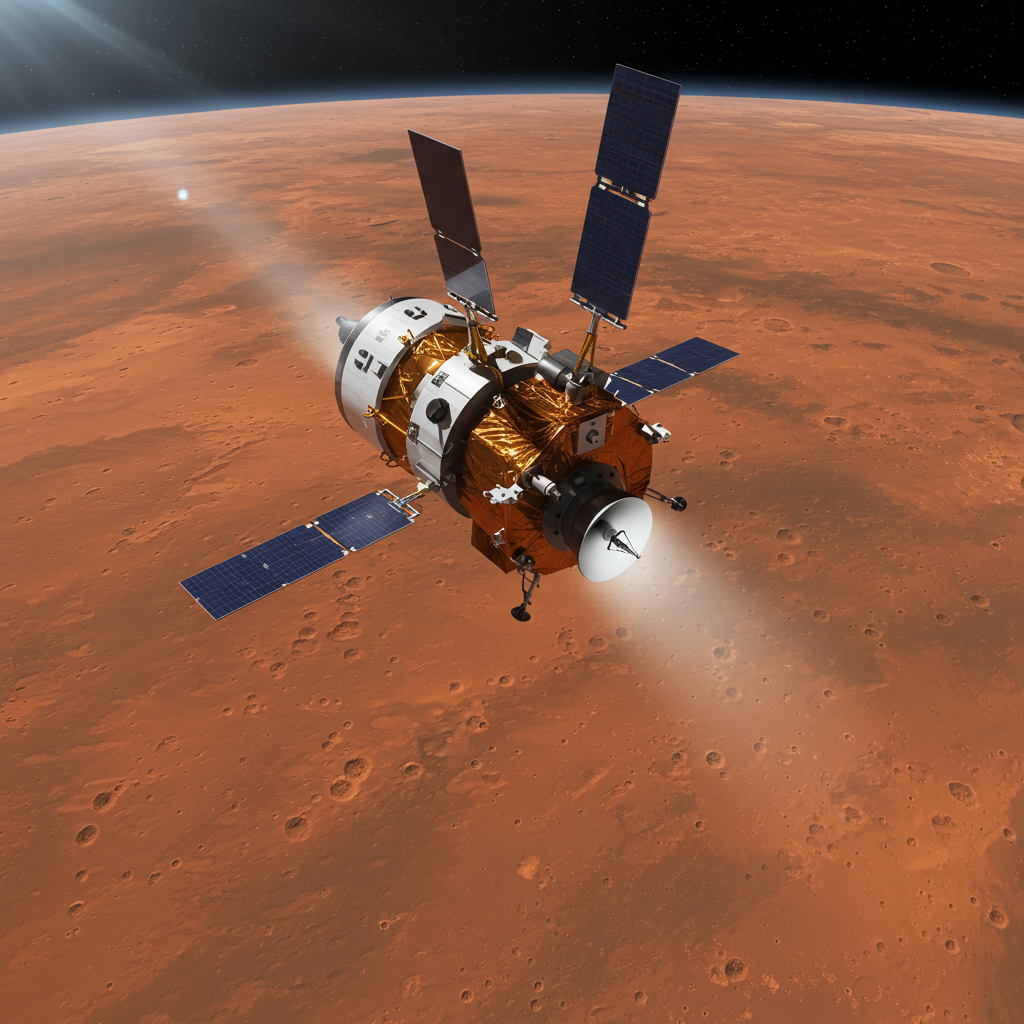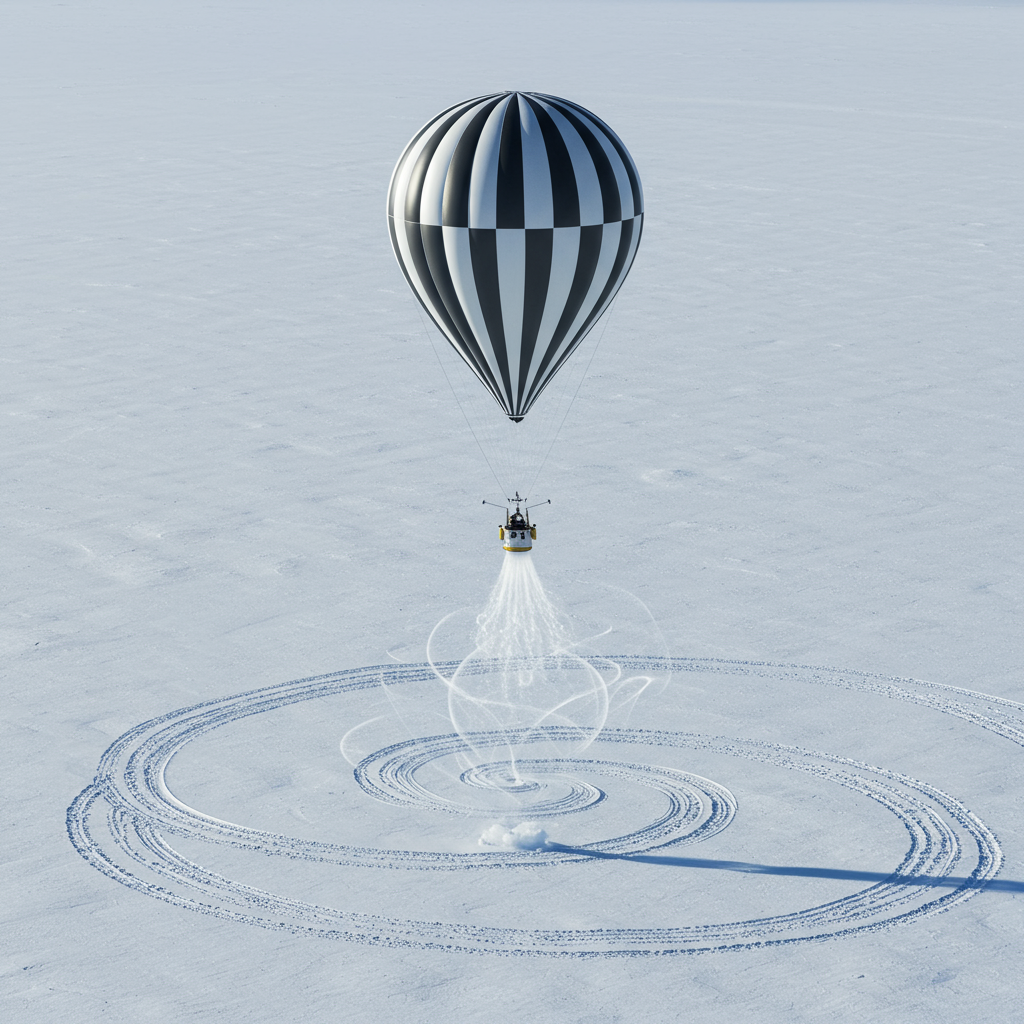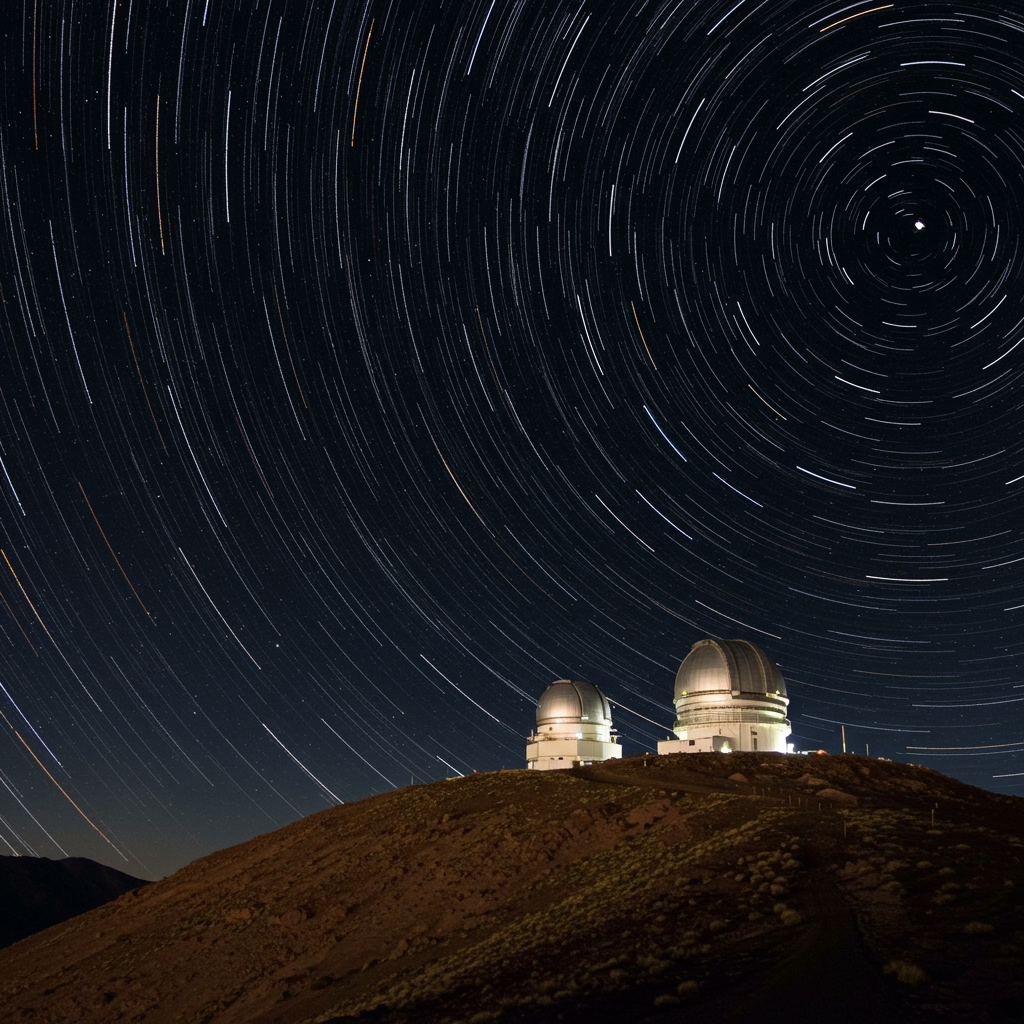NASA’s Mars Reconnaissance Orbiter (MRO), a venerable spacecraft that has circled the Red Planet for nearly two decades, is demonstrating remarkable agility by learning dramatic new maneuvers. Engineers have taught the veteran probe how to perform “very large rolls,” fundamentally altering its orientation in space to enhance its scientific observations, particularly the search for water deep underground.
These innovative rolls involve rotating the spacecraft by a significant 120 degrees, a stark contrast to its original design capability, which allowed for rolls of only up to 30 degrees in any direction for pointing instruments at surface targets. The ability to perform these much larger rotations represents a significant operational advancement for the long-serving orbiter.
Boosting Subsurface Radar Capabilities
The primary beneficiary of these new extreme maneuvers is MRO’s Shallow Radar (SHARAD) instrument. Designed to probe depths of up to 1-2 kilometers (about half a mile to a little over a mile) below the Martian surface, SHARAD helps scientists distinguish different materials like rock, sand, and crucial water ice. Identifying buried water ice is vital for understanding Mars’ past climate and geology, and critically, for locating potential resources that future human explorers could use for sustenance or even to create rocket propellant.
SHARAD’s two antenna segments were originally positioned at the rear of the spacecraft to ensure unobstructed views for MRO’s forward-facing cameras, such as the powerful HiRISE instrument. While beneficial for imaging the surface, this configuration meant SHARAD’s radio waves, when emitted towards the planet, could encounter parts of the spacecraft, causing interference and resulting in less clear subsurface data.
By performing the 120-degree very large rolls, MRO rotates itself nearly upside down, granting SHARAD an unimpeded pathway to the Martian surface. This optimized view dramatically boosts the radar signal strength by 10 times or more, providing significantly brighter and clearer data. Scientists can now discern more intricate subsurface details that were previously hidden. The success of this technique, demonstrated through three test rolls performed between 2023 and 2024, was recently detailed in a paper published in the Planetary Science Journal.
As Gareth Morgan, a SHARAD co-investigator and one of the paper’s authors, noted, “Not only can you teach an old spacecraft new tricks, you can open up entirely new regions of the subsurface to explore by doing so.”
Complex Maneuvers Require Detailed Planning
Implementing a 120-degree roll is a complex undertaking. Unlike standard rolls where the spacecraft maintains constant communication with Earth and keeps its solar arrays angled towards the Sun, the extreme tilt required for the very large roll prevents both. This means MRO must rely solely on its internal battery power during the maneuver, and communications are temporarily interrupted.
Each very large roll requires extensive analysis and planning to ensure the spacecraft’s batteries have sufficient power reserves. Due to the complexities and time involved in orchestrating these maneuvers safely, the mission currently limits their frequency to one or two per year. However, engineers are continuously working to streamline the process, potentially allowing for more frequent use in the future.
Adapting to Challenges: The Mars Climate Sounder
Beyond the groundbreaking very large rolls for SHARAD, MRO’s standard rolling capability continues to be utilized in innovative ways by other instruments. The Mars Climate Sounder, which provides detailed data on the Martian atmosphere, including temperature profiles, dust storm tracking, and cloud formation, previously used a dedicated gimbal to adjust its view.
However, in 2024, the instrument’s aging gimbal became unreliable. The mission team successfully adapted by incorporating MRO’s standard rolls into the Mars Climate Sounder’s routine planning for both surface observations and calibration. This allows the instrument to continue gathering vital atmospheric data, which is crucial for understanding phenomena like wind-borne dust that constantly reshapes the surface and could pose risks to future astronauts. As Armin Kleinboehl, interim principal investigator for the instrument, remarked, while rolling used to restrict science, the team has now fully integrated it into their operations.
Managed by NASA’s Jet Propulsion Laboratory (JPL), MRO’s continued success is a testament to the ingenuity of its engineering and science teams, as well as international collaboration, including contributions from the Italian Space Agency for the SHARAD instrument. By teaching this veteran spacecraft new, extreme moves, NASA is ensuring MRO remains a critical asset in unlocking the secrets of the Red Planet’s subsurface and atmosphere.




